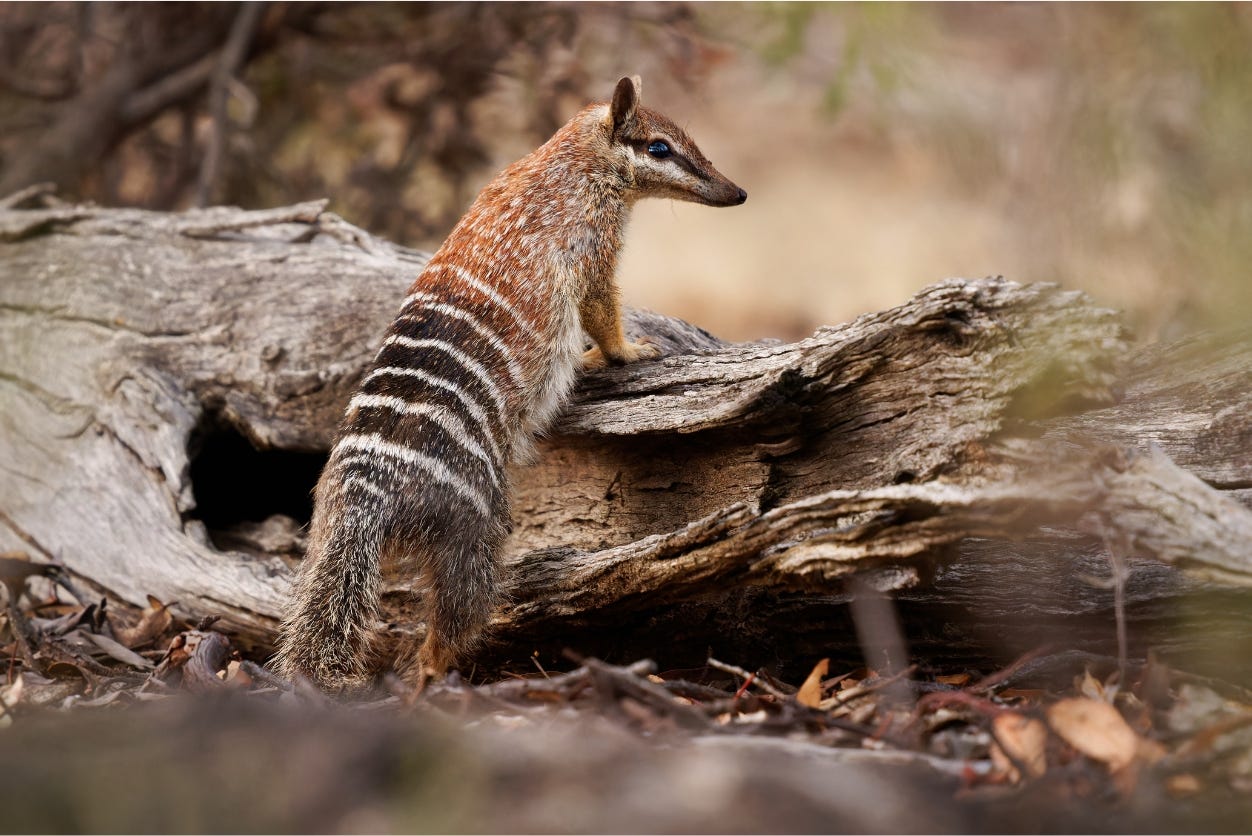Good News #25
Baby Numbats spotted in Australia, endangered tortoises artificially incubated, the world's largest marine protected area, India's new wildlife sanctuary, and restoration plans for the Beas River
Hello friends,
I hope you had a great week. Sorry for the late post — I am on a rare kid-free vacation!!! News doesn’t stop though, and I wanted to take some time to pull together this week’s top stories. I haven’t missed a week yet, and I don’t plan to. After all, this week marks the 25th issue of Good News! As always, I hope it brings you some hope and inspiration.
Yours for the Greener Good,
Brett
Aldabra Giant Tortoises have been artificially incubated for the first time
Conservationists in the Seychelles have achieved their first successful artificial incubation of Aldabra Giant Tortoises, hatching 13 healthy babies from 18 eggs taken from a single nest on Cousin Island. Researchers used microscopic analysis to identify at-risk embryos inside shells: many eggs are fertilized but fail early due to environmental stressors. This breakthrough offers hope for bolstering the population of this vulnerable species, which was hunted out of most other Indian Ocean islands in the 19th century.
French Polynesia has created the world’s largest marine protected area
French Polynesia has officially designated its entire exclusive economic zone—about 4.8 million square kilometers — as the world’s largest marine protected area to safeguard ocean biodiversity, preserve cultural practices, and curb destructive activities like deep‑sea mining and industrial fishing. Commercial fishing will be banned within 900,000 square kilometers, and 186,000 square kilometers will be reserved for artisanal fishing. The new park, announced at the UN Ocean Conference, aims not only to restore marine ecosystems and protect marine species, but also to integrate local communities’ traditional stewardship, with further expansions planned by 2026.
India’s Supreme Court has designated the Saranda Forest as a wildlife sanctuary
India’s Supreme Court has issued a landmark ruling mandating that the Saranda Forest in Jharkhand be designated as a protected wildlife sanctuary. The decision covers over 300 square kilometers of ecologically rich forest that is home to tribal communities and provides habitat for wildlife like elephants and leopards. The forest has long been threatened by mining and deforestation, and conservationists hail the ruling as a turning point for safeguarding the region’s biodiversity.
Rare baby Numbats spotted in Australian sanctuaries
Seven baby Numbats — some of Australia’s most endangered marsupials — have been observed at two wildlife sanctuaries in New South Wales, offering new hope for the species’ recovery. Conservationists credit ongoing predator control and habitat restoration efforts, including fenced sanctuaries that exclude invasive species like foxes and cats. With fewer than 1,000 individuals estimated in the wild, each successful birth is a step toward rebuilding the population.
India’s Punjab government plans to restore the Beas River
The Punjab government has unveiled an ambitious plan to restore a 185-kilometer stretch of the Beas River, which is polluted with sewage, industrial effluents, and agricultural runoff. The plan includes pollution cleanup, water quality monitoring, wildlife surveys, and climate impact assessments. A key component of the plan is automatic water quality and hydro-meteorological monitoring stations to track pollution levels and hydrological parameters. The data from these stations will be used to create annual “wetland health cards,” which will guide further restoration efforts. The strategy aims to clean the river for both people and aquatic species like the endangered South Asian River Dolphin.



